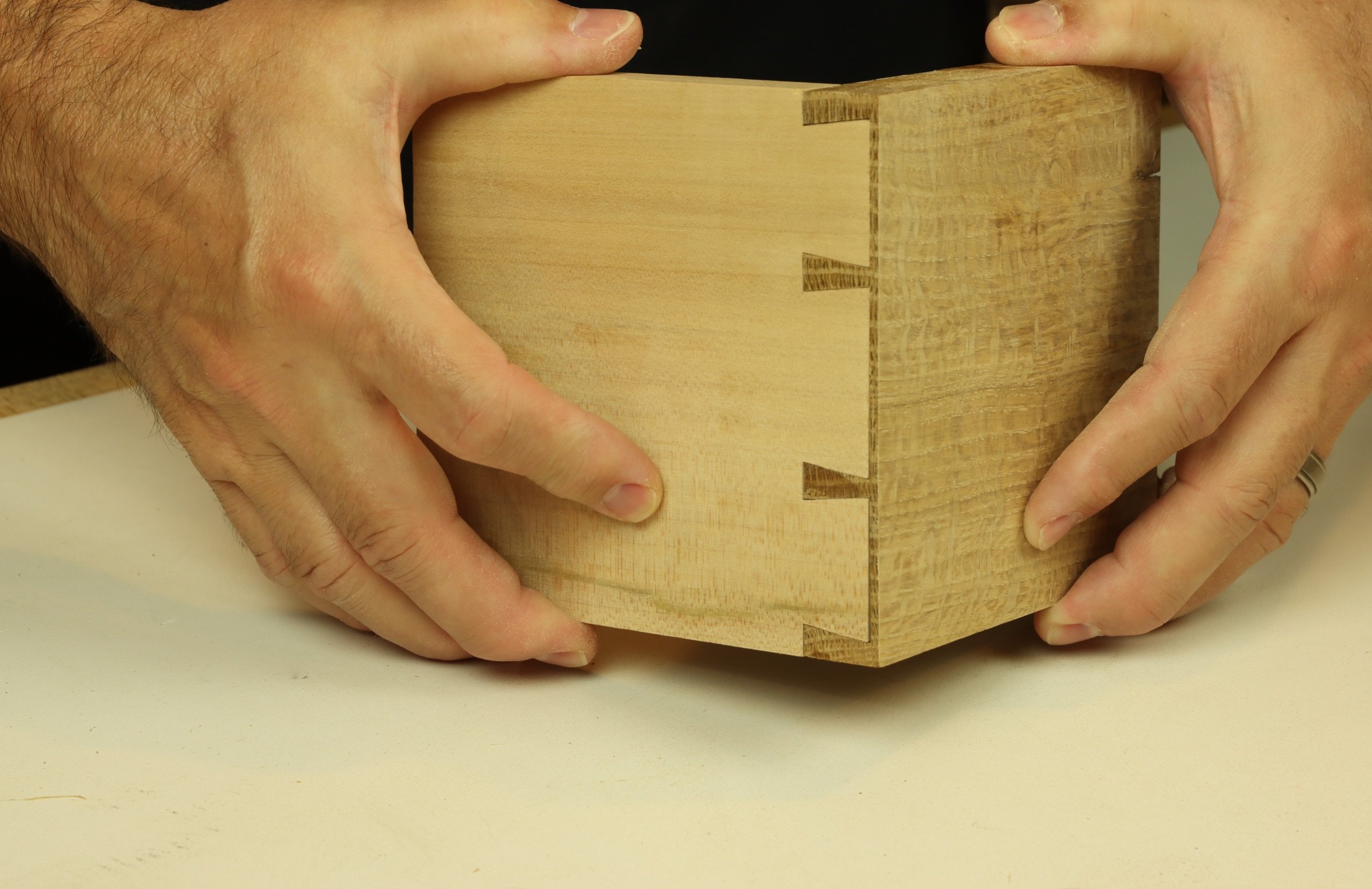If you build furniture long enough, you’ll encounter a need to build drawer boxes. Want to tackle a home renovation involving cabinets? You’ll need to think about drawers. And what type of joinery you choose for those drawers can be an interesting topic to consider. Perhaps the hallmark of traditional quality is a half-blind dovetail joint. It’s either cut by hand, or with a specialized router jig. A through-dovetail is another variation, but usually requires a “false front” applied to the drawer box to cover the joinery.

Integral half-blind dovetail joints are strong and functional for drawer boxes. They actually resist the most common force put on drawers… pulling the drawer open. While these traditional joints are handsome, they are perhaps the most labor-intensive joint to make for this application. Reserve half-blind dovetails for your most prized pieces.

A rabbet joint is probably the most common drawer joint today, and for good reason. It’s easy to cut at the tablesaw, and the components partially interlock for increased glue surface area. Of course, you’ll need additional fasteners, but that’s often a good trade-off for drawer boxes that are so easy to build at the tablesaw. Drawer boxes made this way are often built from plywood, with the sides of the drawer box getting the rabbet.

Sometimes, the drawer sides will be made from thinner stock than the drawer fronts, although not always. In either case, you’ll use the drawer part to set the rip fence of the tablesaw to make the rabbet cut. You’ll need a dado blade installed on the saw, as well as a sacrificial fence to protect the factory rip fence. You may decide to cover the joint with a false front, although it’s optional with this style of drawer. You’ll find rabbeted drawer boxes in shops, kitchens, and everywhere in between.

Box joints (AKA finger joints) are fun to cut at the tablesaw, especially if you have an accurate jig that rides in the miter slots. Box joints made on the tablesaw easily rival the best router jigs, especially if you use a high-quality dado blade. When it comes to making drawer boxes with box joints, designers sometimes skip the false drawer front to let the attractive joinery show in the finished furniture piece.
Take a quick peek at my adjustable Box Joint Jig for the tablesaw…
https://info.lagunatools.com/making-a-box-joint-jig-for-a-tablesaw

I suppose one could use a simple butt joint for building simple drawer boxes as well, although I don’t see this method used as much. There is minimal surface area for glue, and the joint is entirely end-grain to long-grain. When end-grain is used to glue two boards together, it typically isn’t as strong. For this reason, butt joints used in cabinetry or furniture construction need to be reinforced with additional means. Biscuits, dowels, or loose tenons are the preferred choice when you don’t want to see a fastener in the finished project. Occasionally, I’ve used reinforced butt joints in carcass construction with success, however my preference is to make interlocking joints like rabbets or dados.
Willie Sandry is a Freelance Writer and crafter in wood and leather. Check out his YouTube channel the Thoughtful Woodworker for specialty techniques on cutting thin-pin half-blind dovetail drawers with a router.




